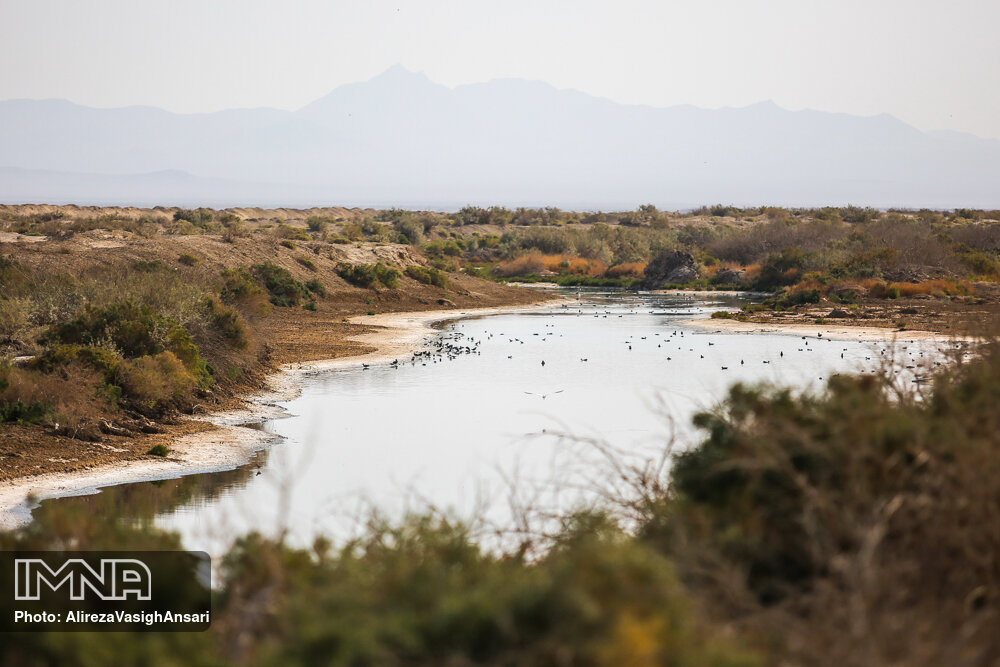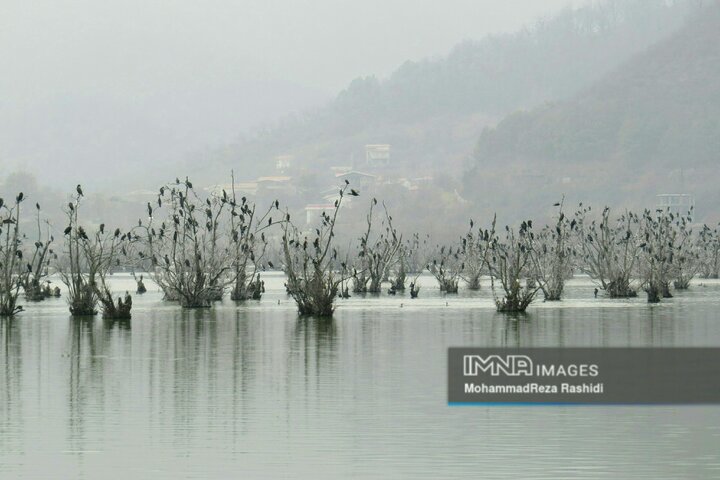Iran (IMNA) - Wetlands are home to over 40% of all species on the planet, yet a quarter of these fascinating critters are on the verge of extinction.
Each individual organism has an effect on and depends on every other one in an ecosystem. By preserving one type of animal or plant, the entire ecosystem is safeguarded.
According to Arezoo Ashrafizade, the head of Iran's Department of Environment's office for wetlands conservation and restoration, the DOE has always worked to realize the potential of women and local communities to help conserve wetlands. The DOE was a pioneer of sustainable development in the country.
As reported by Ashrafizadeh, the DOE has been attempting for many years to engage women and build strong relationships with those living nearby in order to maintain and revitalize the natural reserve.
She pointed out that, in this regard, the Marine Environment and Wetlands Affairs Department has established a template for public engagement in the rehabilitation of Urmia Lake under Iran's Wetlands Protection Plan.
Sustainable livelihoods in rural and nomadic regions, as well as "diversification to income generation compatible with wetland resources" in the two categories of "agricultural jobs" and "non-agricultural jobs," were major focuses of these efforts, which were initiated in 2013.
The project's implementation objective is to foster and promote livelihoods compatible with wetland resources, reduce the strain on natural resources, set up a wetland’s sustainable agriculture program, build the capacity of regional stakeholder networks, participate in local communities, and manage sustainable agriculture.
It was intended to protect wetlands by utilizing local resources, particularly the capabilities of women, in 54 villages across the four provinces of West Azarbaijan, East Azarbaijan, Fars, and Khuzestan. It demonstrated that locals and women work together most effectively to protect wetlands and the environment.

Investing in women's empowerment indirectly contributes to environmental protection, local education, and training.
According to the head of the Department of Environment's office for wetlands conservation and restoration, the DOE's successes included the participation of 76 percent of women in training courses for particular skills and of 66.5 percent of women in programs for environmental literacy in pilot villages.
Wetlands are essential for the numerous advantages or "ecosystem services" that they give humanity, including drinking water, food, construction materials, biodiversity, flood control, replenishment of groundwater, and climate change mitigation.
Study after study shows that wetland areas and their ecosystems are declining in most parts of the world. Between 1970 and 2015, wetlands throughout the world lost around 35 percent of their area, and the pace of degradation is accelerating. As a result, the ecological benefits provided by wetlands to people are jeopardized. Wetlands are one of humanity’s primary resources in the battle against climate change, and if they disappear, we risk losing more than just the essential natural services they offer.
Wetlands are rich in plant life, releasing oxygen while simultaneously absorbing and storing massive amounts of carbon in their soils, a process known as carbon sequestration. Wetlands operate as carbon sinks in this way, absorbing more carbon than they emit.
Wetland management is a worldwide concern, and the Convention currently has 172 contracting parties, demonstrating the importance of having a single international convention dedicated to a particular natural habitat.
Wetland protection requires collective endeavor
Wetlands are defined broadly under the Ramsar Convention. All lakes and rivers, underground aquifers, swamps and marshes, wet grasslands, peatlands, oases, estuaries, deltas, tidal flats, mangroves and other coastal regions, coral reefs, and all man-made sites like fish ponds, rice paddies, reservoirs, and salt pans are included.
The Wetlands Convention is an intergovernmental convention that establishes a framework for the protection and thoughtful use of wetlands and their resources.
The Ramsar accord was signed in the Iranian city of Ramsar in 1971 and went into effect in 1975. Since then, about 90% of UN member nations from all geographic areas of the world have agreed to become "Contracting Parties."
Iran has recognized 141 wetlands with biological significance spanning an area of more than 3 million hectares, 25 of which are classified as wetlands of international importance (registered in the Ramsar Convention) encompassing more than 1.4 million hectares, and a total of four locations are biosphere reserves.
Wetland protection will involve investigation into the magnitude of the harm, institutional cooperation, and coordinated action from governments and enterprises. But if we do it well, our wetlands and the creatures that live there may continue to flourish, which is good for all of us.



Your Comment